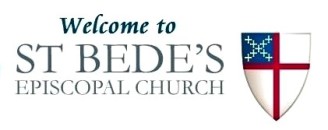The Church Year
AND THE LITURGICAL COLORS
A HISTORIC YEAR
The Christian Year is as old as the Resurrection of our Lord and as new as the latest revisions. With the resurrection, the disciples of Jesus began a weekly celebration of the event on the First Day of the week. These disciples, like their Lord, had all their lives observed the Jewish Ritual Year. But eventually they substituted Sunday, the First Day of the week, for Saturday the Seventh Day, Easter for the Passover, and the Baptism of the Holy Spirit for the giving of the Law from Sinai. Together with this they soon began to observe the Nativity of the Lord. Adding certain preparatory and penitential seasons, they had by the sixth century developed a Christian Year for the order of worship, substantially as we have it today.
The four weeks of Advent ("Coming") are devoted to preparation for the Feast of the Nativity (Christmas) - and the preparation for His second coming, in majesty, to judge the world. Then, following the events of his earthly life of self-sacrifice, we celebrate His Death, Resurrection, and Ascension, and the descent of the Holy Spirit on Pentecost (Whitsunday). The second half of the Church Year is co-ordinate with the first, since it celebrates the continuing work of Christ, in His Church, by the Spirit.
Certain days are fixed dates, others are movable, depending upon the date of Easter. Easter falls on the Sunday after the 14th day of the Paschal moon - that is the Calendar moon whose 14th day falls on, or follows next after, the vernal equinox, March 21st. In addition to events in our Blessed Lord's life, certain saints and martyrs are commemorated - and prayer is made to Almighty God that we may follow their good example of faithfulness, even unto death.
THE VALUE AND INCREASING USE OF THE CHURCH YEAR
The Anglican, the Roman, the Greek Orthodox and the Lutheran churches have followed this Christian Year, each making its own distinctive contributions. The new emphasis of our day on worship, beauty, architecture and ecumenism is, however, bringing the Christian Year into even wider usage among all Christians. This orderly progression of the presentation of the facts of our Lord's life is impressive and instructive, as it carries one through the colorful days and festivals of our Lord's life and ministry, and those of the Church in which He is Incarnate.
THE LITURGICAL COLORS
As God has flooded earth and sky with color, so the Church has sensed the symbolic use of color in its worship. As dominating colors in nature change with the seasons of the fourfold year, so in the Church Year there is a structured change in the colors of the Eucharistic vestments, the liturgical colors. This sequence of liturgical colors has a principal role in Christian visual education, in teaching the Gospel through the eye.
WHITE, symbolizing joy, purity and truth, is used during the twelve days of Christmas from Christmas Day until Epiphany (the coming of the Wise Men), the fifty days of Paschal (Easter) from the Sunday of Resurrection (Easter Day) until the Day of Pentecost (coming of the Holy Spirit), Trinity Sunday, the Transfiguration of Our Lord Jesus Christ, and the Last Sunday after Pentecost celebrating Christ the King.
RED, the color of fire and of blood, is used on Pentecost, Palm Sunday, and Good Friday.
GREEN, the color of living things and of God's creation, is used in the season from Epiphany until Lent begins on Ash Wednesday, and the season from Pentecost until the First Sunday of Advent.
VIOLET, symbolic of penitence and expectation, is used in the seasons of Advent and Lent.

